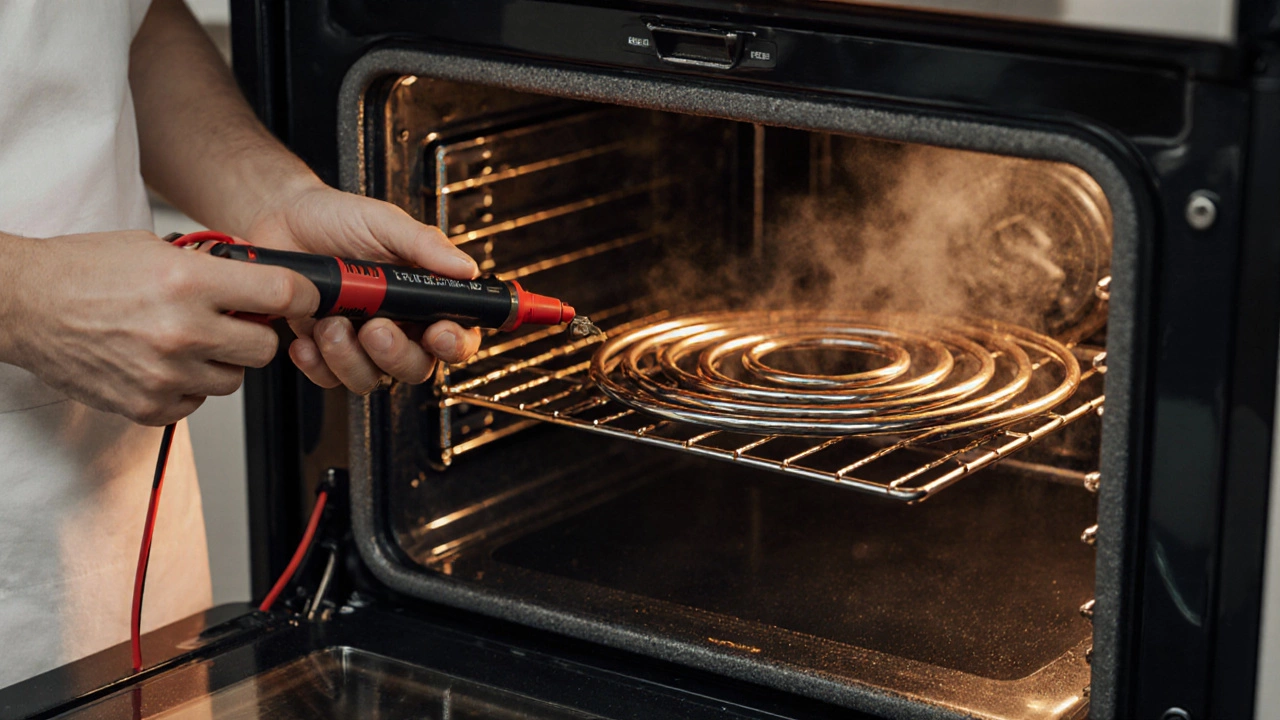Oven Problems? Quick Fixes and When to Call a Pro
If your oven is acting up, you don’t have to panic. Most issues are easy to spot and can be fixed without a big bill. In this guide we’ll walk through the typical signs of trouble, give you step‑by‑step tips, and help you decide when it’s time to ring a professional.
Spot the Most Common Oven Issues
The first thing to check is whether the oven heats up at all. If the temperature stays low or the display shows an error code, the heating element or thermostat could be the culprit. Turn the oven on to a high setting, wait a few minutes, and feel the walls – they should get warm. No heat? Turn off power, remove the back panel, and look for a broken or burnt element.
Uneven cooking is another red flag. If cookies bake on one side but burn on the other, the oven’s fan might be failing or the temperature sensor could be inaccurate. A simple test is to place a pan of water on the middle rack and watch it boil. If the water boils faster on one side, the heat isn’t spreading evenly, and you’ll need to clean the fan or replace the sensor.
Strange noises often mean a loose part. A rattling sound when you turn the oven on points to a broken fan blade, while a high‑pitched squeal can be a failing motor. Unplug the oven, remove the fan cover, and tighten any loose screws. If the fan blades are cracked, replace them – it’s cheaper than a full service call.
When to Call a Pro and How to Save Money
Age matters. An oven older than 10‑12 years may have worn‑out seals, rusted wiring, or outdated safety features. Even if you fix the heating element, other hidden problems could surface later. In those cases, compare the repair quote with the cost of a new mid‑range oven. If the repair is more than half the price of a new unit, replacement is usually smarter.
Cost‑saving starts with regular maintenance. Clean the interior after each use, wipe away spills, and check the door gasket for cracks. A well‑sealed door keeps heat inside, so the oven doesn’t work harder than necessary. Also, schedule a yearly check‑up with a local repair service – a quick inspection can catch issues before they become expensive breakdowns.
If you do need a professional, be clear about the problem. Tell them whether the oven won’t heat, cooks unevenly, or makes odd noises. The more details you give, the quicker they can diagnose and quote the job. Many local technicians offer a free estimate and will explain if parts are readily available or need ordering.
Bottom line: most oven problems are either a faulty heating element, a bad sensor, or a broken fan. You can test for heat, check for uneven cooking, and tighten loose parts yourself. When the oven is old or the repair cost is high, consider replacing it with an energy‑efficient model. Either way, regular cleaning and a yearly check will keep your oven humming along for years to come.

Common Oven Problems and How to Fix Them
Learn the most common oven problems, how to diagnose them, and simple fixes. Includes safety tips, a diagnostic table, and FAQs for quick troubleshooting.

Identify and Fix Electric Oven Problems Effortlessly
Electric ovens are essential for any kitchen, but when they malfunction, it can be frustrating. Identifying problems with your electric oven can save you time and money before seeking professional help. This article guides you through common issues, such as uneven heating, strange noises, and faulty door hinges. Additionally, discover practical tips for troubleshooting these problems efficiently to ensure your oven operates smoothly.